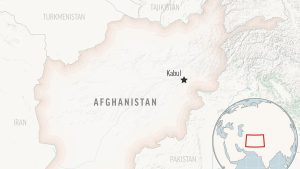A recent study led by CIRES researchers has revealed that the melting of glacier ice in Antarctica can lead to the fracturing of ice shelves, rather than just causing them to buckle under the weight of the meltwater pools. This finding is significant because as the climate warms and melt rates in Antarctica increase, these fractures could potentially lead to the collapse of vulnerable ice shelves. This collapse, in turn, can result in inland glacier ice spilling into the ocean, contributing to rising sea levels. Ice shelves play a crucial role in buttressing or holding back the glacier ice on land, making them essential for the overall health of the Antarctic Ice Sheet.
To investigate the impact of surface meltwater on ice shelf stability, researchers from CIRES and other institutions traveled to the George VI Ice Shelf on the Antarctic Peninsula in November 2019. They identified a depression in the ice’s surface where previous lake drainage had occurred which they believed would be a likely spot for meltwater to pool again. The team installed high-precision GPS stations, water-pressure sensors, and a timelapse camera system around the doline to measure small changes in elevation, lake depth, and capture images of the ice surface and meltwater lakes every 30 minutes.
In 2020, their fieldwork was abruptly halted due to the COVID-19 pandemic, but they were able to return to their research site in November 2021. Despite some of their instruments being damaged, the surviving instruments captured valuable data showing how the ice’s surface responded to the weight of the meltwater. The GPS data revealed that the ice in the center of the lake basin flexed downward by about a foot as a result of the increased weight from the meltwater, while the timelapse imagery showed the formation and widening of circular fractures around the lake basin.
The horizontal distance between the edge and center of the meltwater lake basin also increased by over a foot, indicating the formation and widening of circular fractures. These fractures were found to be crucial in the chain reaction style lake drainage process that contributed to the breakup of the Larsen B Ice Shelf in 2002. The study’s findings support modeling results that suggest the immense weight of thousands of meltwater lakes and their subsequent draining can cause ice shelves to bend and break, ultimately leading to their collapse.
The discovery of ice shelf fracturing in response to surface meltwater lakes provides valuable field-based evidence that can be used to improve models predicting which Antarctic ice shelves are most vulnerable and likely to collapse in the future. This research highlights the importance of understanding how melting ice in Antarctica can impact ice shelves and, in turn, sea level rise. It also emphasizes the need for continued monitoring and research to better understand the processes driving ice shelf stability and collapse in a warming climate.





